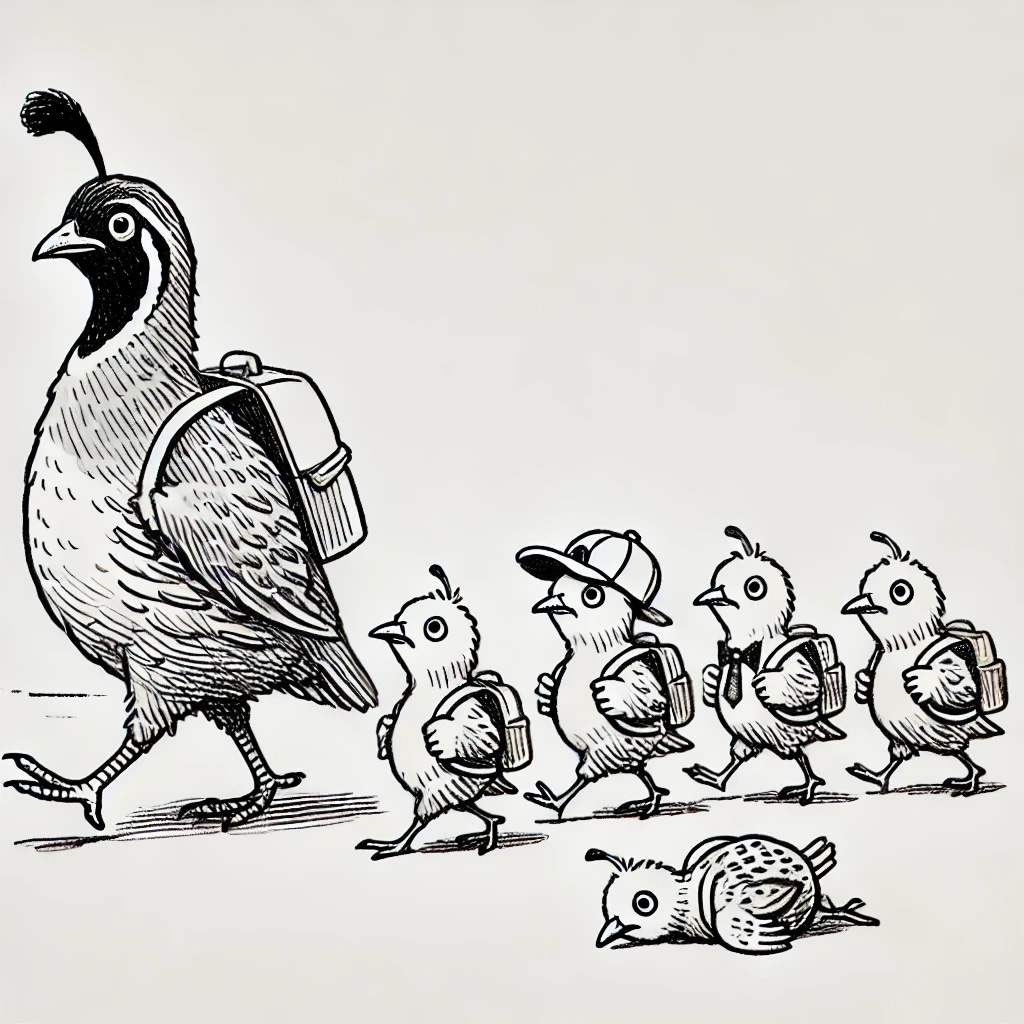NAPA VALLEY, Calif. — Labor Day brings with it such mixed feelings for me. As a child, I looked forward to it from the time school let out at the end of May. I lived in the country, quite a distance from where my friends lived in town, so the end of summer signaled the chance to see them again and — geek that I was — to open up my new textbooks and get busy. One year on the day after the holiday my parents found me outside waiting for the bus at 2 a.m. I was dressed in my new school clothes and sound asleep.
As an adult, I lost an important person in my life during this holiday weekend, so it has become an anniversary that I don’t anticipate with pleasure. It also means that soon I’ll be spending less time outside and not taking evening walks when the days grow ever shorter. The small garden that grows in pots on my patio will soon be gone and with it the fresh tomato salads and homemade pesto — more reasons to be sorry when the holiday weekend arrives.
Despite my own feelings, however, the best part of Labor Day never changes: the respect for hard work. Labor unions lobbied for the day in the 19th century, and the observance they proposed soon spread all over the country. Grover Cleveland signed it into law in 1894, selecting the first Monday in September in the hope of avoiding the riots and demonstrations that plagued other places. Countries in Europe and Asia were already honoring the same occasion, International Workers’ Day, on May 1. In Russia the date has come to be synonymous with political posturing and blocks-long parades of tanks and missiles, but it all started out with the same idea.
I come from a family that valued and praised work and were proud of their jobs, even though they were humble. I can still smell the metal shavings that clung to my father’s steel-toed boots when he came home from the foundry and feel the warmth of the sweaters my mother wore over her uniform at the grocery-store check stand. When her shift was finished, she kept the garden that sustained us through the winter, canned and sewed. Springs she dragged our furniture out onto the lawn so that she could scrub and polish the walls, floors and cupboards. I recall her exhausted laughter, as if she were high on her own hard work.
My farmer grandfather oversaw teams of neighborhood helpers as they strove together to bring in hay before a thunderstorm. My grandmother, meanwhile, spent her mornings cooking up lunchtime meals for maybe 20 men, ringing a bell and calling them in from the fields to sit down to a full-on noontime dinner. My uncle and cousin were coalminers who emerged from their workplace each afternoon so covered with black dust that they could never get completely clean.
Thanks to a college education made possible by all of those hard workers, I take pride in my own productivity, even though I spend my time at a computer and my job is nowhere near as difficult, strenuous and often unpleasant as theirs. Something else they gave me, however, was respect for the labor of others. I am grateful for mail carriers, refuse collectors, mechanics, nurses, store clerks, waitstaff, bus drivers, farmers and migrant workers, hair stylists, gardeners and the hundreds of others who make the life I enjoy possible.
“You’re awfully nice to the guys who are working on your house,” a friend observed as I took out cookies and water to builders who were helping us remodel. “Why wouldn’t I be?” I asked. “They are helping us do something we don’t know how to do.” During a recent vacation my husband and I drove past road workers across three states, some of whom put on slickers and kept going despite a persistent cold rain. Would I be able to help them build a freeway overpass? No. But I can appreciate what they are doing to make travel in this country safer.
A trip to Bratislava a few years back gave me another reason to consider the nature and importance of work. I was having tea and cake in the home of a Slovakian woman who was telling my travel companions and me about how life had changed since the Soviet Union ended.
“I know you Americans want me to say everything is better now,” she said. “But in some ways, it isn’t. The government used to pay for housing, education and health care, and now we are on our own. Our standard of living has actually gone down.”
But then she said she would have traded all of that for a career of her own choosing. The government, she told us, assigned occupations according to where they had needs. Despite not liking to work with numbers and wanting to be an artist, she spent her adult life as an accountant. She dreaded and despised every single day of her working life. Her computer-engineer husband even created a program so that she could count the days, hours, minutes and seconds until she could retire.
And retirement is another loaded subject. I recently read an article about Dustin Hoffman in which the interviewer asked when he planned to retire. “Never,” he responded. “Retirement is for people who don’t like their jobs.” That would include my Slovakian friend, whom I fervently hope is by now making some of the paintings she might have during the years when she managed financial matters.
But why would anyone who loves what they do ever want to stop? Imagine Pablo Picasso, who lived to be 91, laying down his brushes at age 65 and calling it quits. Or Mel Brooks checking into a retirement home years ago instead of being 98 and still making us laugh. Judi Dench, 89, is still considering other roles, even though macular degeneration has almost completely taken away her sight. “Confess to yourself in the deepest hour of the night whether you would have to die if you were forbidden to write,” wrote the poet Rainer Maria Rilke, and that would be my fate for sure.
Marge Piercy, another poet, has put the joy of work into perhaps the most eloquent words: “The people I love the best jump into work head first without dallying in the shallows and swim off with sure strokes almost out of sight,” she writes in “To Be of Use.” She ends it by saying, “The pitcher cries for water to carry and a person for work that is real.”
Time off, leisure activities and entertainment are gifts not to be squandered. But the joy of a job well done is its own reward. Workers deserve a holiday when they can stop to reflect on and celebrate their labors.
If today’s story captured your interest, explore these related articles:
Sunday E-dition: Mental Health Tips for Caregivers and Students
Sunday E-dition: End-of-Life Planning for Peace in Challenging Times
Sunday E-dition: Retired Judge Brings Real Napa Valley Crimes to Life
Sunday E-dition: WineaPAWlooza Raises $1.1 Million for Animals
Glenda Winders is a novelist, freelance writer and copy editor for Napa Valley Features.
Levity Corner
Caption contest: Pick your favorite caption or add your own in the comments below.
Possible captions:
Teamwork: the art of spinning in perfect unison.
In the grand machine, no one part is too small.
Sometimes, it’s the quiet ones that do all the work.
A symphony of cogs, each playing its part.
And to think, it all runs on coffee and determination.
Last week’s winner
In "Sunday E-dition: Back to School — Mental Health Tips for Caregivers and Students,” the winning caption was "Can someone carry me? I’m exhausted just thinking about it,” with 60% of the votes.
Last Week
Last week, Tim Carl questioned the assumptions driving Napa Valley's push for affordable housing in his article "Under the Hood: Is Napa Valley Building for a Future That Doesn’t Exist?" Carl revealed that claims of a daily influx of 60,000 to 70,000 commuters are inaccurate, with data showing a net inflow of just over 4,000 workers. He argued that this misconception could lead to overbuilding housing that may not meet the region's actual needs, particularly as Napa's population ages and its economic landscape shifts. Carl suggested that Napa Valley might benefit more from investing in workforce development and other sustainable solutions than from expanding housing based on outdated or exaggerated data.
Last week, Kellie Kennedy and Charlotte Hajer provided mental health strategies for caregivers and students in "Sunday E-dition: Back to School — Mental Health Tips for Caregivers and Students." They discussed the challenges of back-to-school transitions and emphasized the importance of routines, planning and self-care to ease anxiety during this period. The authors encouraged flexibility and patience, advising caregivers to involve children in discussions about their school routines and transitions to help them feel supported.
Last week, Sasha Paulsen reflected on the 10-year anniversary of the 2014 South Napa earthquake in her article, "Under the Hood: 10 Years Later, A Reflection on the 2014 South Napa Earthquake." Paulsen recounted her experience of returning to Napa from Los Angeles after the 6.0 magnitude quake, which caused widespread destruction, including damage to historic buildings and significant disruptions to local infrastructure. She also shared memories and insights from other Napa residents, highlighting the community's resilience in the face of natural disasters. Paulsen emphasized the lasting impact of the earthquake on the Napa Valley and the strength of its residents in rebuilding and moving forward.
Last week, Corinne Yoshihara explored the botanical nuances of what constitutes a true berry in her article "What Makes a Berry a Berry?" Yoshihara revealed that fruits like strawberries, raspberries and blackberries, commonly referred to as berries, do not meet the botanical criteria due to their multiple ovaries. In contrast, bananas, tomatoes and cranberries are true berries under botanical definitions. She highlighted the difference between common names and scientific classifications, offering a deeper understanding of the fruits we often overlook.
Last week, Dan Berger delved into the complexities of identifying the "best" wine in his article "Dan Berger’s Wine Chronicles: Wine in Context." Berger emphasized that context—encompassing the setting, company and circumstances—plays a crucial role in defining a wine's greatness. He argued that the authenticity of a wine, including its regional identity and varietal character, is essential for it to be truly exceptional. Berger also reflected on memorable wines from his extensive experience, illustrating how context and quality intertwine to create unforgettable wine experiences.
Next Week
Next week we will have more interesting articles from a host of Napa Valley Features contributors. The Master Gardener series on Wednesday will provide gardening insights, while Dan Berger will focus on wine topics on Thursday. We’ll hear from Tim Carl about a famous winemaker artist and from Kathleen Scavone about the scourge of Sudden Oak Death. Plus much more.










Glenda,
What a great article! I love my "retirement" from my official job, but I am more active than ever now with volunteering and things I didn't have time for before retirement. Sitting around is much more difficult than working!
Brilliant, poignant, and life-affirming! I love what I do and will never retire voluntarily.